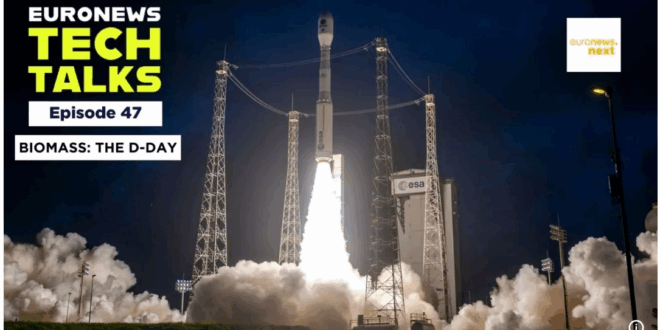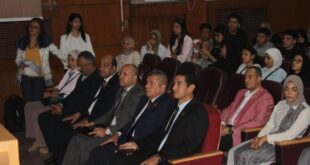Muhamad Yehia .. Cairo
What happens on a satellite’s launch day? What are the thoughts and emotions of those behind the mission? Follow along with a special Euronews Tech Talks episode from Kourou.
In the early morning of April 29, people in Kourou, French Guiana, were woken up by the roar of the Vega-C rocket as it carried Biomass, the latest satellite from the European Space Agency (ESA), successfully into space.
The Biomass mission not only represents a leap forward in the scientific understanding of tropical forests, but its launch also marked a major step toward securing Europe’s independent access to space.
Euronews Tech Talks was on site in Kourou for the launch, and with this second special episode on Biomass, we bring you behind the scenes of the launch preparations
A long journey
The operations on the day of the launch of a satellite, also referred to as D-Day, are just the tip of the iceberg in a long process to get it into space
In the case of Biomass, the project started more than a decade ago and involved several professionals who dedicated their competencies to building the satellite, developing the rocket, and coordinating every step up to and after April 29.
Launch preparations began as early as March 7, when Biomass arrived in French Guiana after a two-week voyage across the Atlantic Ocean.
Upon arrival in Kourou, the satellite was transported to the spaceport, removed from its shipping container, and thoroughly inspected for any potential damage.
Next, Biomass was fuelled and attached to the adapter that would connect it to the Vega-C rocket, enabling its journey into orbit.
On April 14, Biomass was placed inside the fairing, the top part of the rocket, then transferred to the launch pad at the Tangara site.
There, the fairing containing the satellite was placed on the Vega C launcher, followed by more checks and a practice run known as the dress rehearsal.
With all checks completed, it was time for the first weather forecast, a crucial step in the process.
“We need good weather conditions to authorise the launch,” explained Jean Frédéric Alasa, launch range operations director at CNES, the French Space Agency.
“The rain is not a major constraint, it’s more about the wind. If the launcher were to explode, we want to make sure the debris falls far from the populated areas,” he continued.
Luckily, on April 29, the wind was very mild, and the satellite launch was authorised
A sun-synchronous satellite
Vega C lifted off at 6:15:52 AM local time in Kourou. This time was precisely calculated and had to be respected to bring the satellite into the correct orbit.
“For all the SSO missions, there is no launch window, but just one time at which the satellite can be lifted off,” Fabrizio Fabiani, head of the Vega programme at Arianespace, explained.
“Each day could be a good day, but at the same instant”.
SSO stands for sun-synchronous orbit, a special type of orbit where the satellite maintains the same position relative to the Sun. Essentially, Biomass passes over the same location on Earth at the same time every day
This orbit is ideal for monitoring changes over time, which is why it is commonly used for several Earth observation satellites.
An emotional moment
Biomass’s launch was successful and greeted with great excitement by those who worked on it for years.
When the satellite and rocket fully separated, the team erupted into cheers, celebrating the mission’s success
“I’ve indeed been working for 12 years on that mission and now, at the end of it, I would say the predominant sentiment is that I’m super grateful and humbled that I was allowed to do that job,” Michael Fehringer, ESA’s Biomass project manager, told Euronews.
“I feel relieved… that’s all we could ask for, that’s the best result we could have,” Justin Byrne, Airbus head of science and Mars programmes, shared with us.
But while most celebrated, one team remained focused on the mission. Which team was it, and why?
Listen to Euronews Tech Talks to find out the answer.
 موقع وجه أفريقيا موقع وجه أفريقيا هو موقع مهتم بمتابعة التطورات في القارة الأفريقية
موقع وجه أفريقيا موقع وجه أفريقيا هو موقع مهتم بمتابعة التطورات في القارة الأفريقية



